By Dr Charles Margerison – Psychologist
Amazing People Worldwide
WELCOME.
People With Purpose.
Character Exemplars.
How Purpose influences Performance – A Character Development Approach.
Questions on Purpose – Topics for Discussion.
Learning Activities.
Purpose.
Principles.
Plans.
Personal Questions.
Performance.
Proactivity.
Production.
Presentations.
Problems.
Perceptions.
Perception and Creativity.
Perception and Science.
Perception and Engineering.
Converting Perceptions to Actions.
Perception and Risk.
Perceptions and Careers.
Projects.
Action Learning Questions from Projects.
Examples of Project Management.
Five Strategic Project Steps.
Priorities.
Principles and Priorities.
Preferences and Priorities.
Procrastination and Priorities.
Pathways.
Persistence.
Patience.
Practice.
Processes.
Informal and Formal Learning.
People.
Teamwork Skills.
Discussions and Conversations.
Quotations and Meanings.
Passion.
Personal and Political Power .
Career Choices.
Amazing People & Life Skills .
Summary.
References.
The Purpose To Performance (P2P) framework is the result of our research on the lives of over 500 amazing people. It supports student and adult learning on key issues of character and wellbeing.
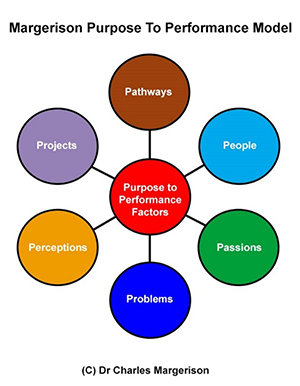
This booklet outlines how to use the above model as a personal development framework.
To succeed, it is essential to have a ‘Can Do Spirit.’ This involves developing positive mental problem-solving strengths and life skills. This is a language of effective action that participants and adults can learn. This resource outlines the key factors and applications.

This guide provides the foundations of a proactive framework for use by adults and students. It is based on the research that we have done on the amazing life stories of people who showed character through their outstanding contributions and achievements.
Participants are inspired and engaged when they have the opportunity to understand the action taken by amazing people. This guide provides the summary of that research with a model that can be used by life-long learners.
Let us start with people of purpose who provide us with practical examples of what can be achieved.
Thomas Barnardo was asked by a homeless boy, Jim Jarvis, to meet children in London who had nowhere to live. As a result of that experience, Barnardo found a purpose for his abilities. He established Barnardo’s, an organization that still provides shelter for children in need of care and protection.
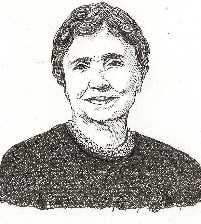
Helen Keller became deaf and blind early in her life. With the help of Anne Sullivan, her companion, she learned to communicate and became a champion for those with disabilities. Despite the challenges, she persisted and is an example of character in action.
Sojourner Truth was enslaved for many years. She decided to find a new life with freedom, and also help others. She did so by escaping and became an important advocate for civil rights.
These are just a few of the inspirational people in our Career Education series. Young people and adults can learn life lessons from such amazing people.
To do so, we have developed a framework based on action factors. These are referred to in the Margerison Purpose to Performance Model. The factors in the model are focus points that all participants can use to comprehend what learning from people with purpose means in practice. The factors also provide a checklist that participants can use for their own self development.


The term character can be interpreted in many ways. Words like courage, resilience, caring and creativity are often used. However, character is what character does. It is only as good as day-to-day behaviour.
All of the amazing people discovered and developed a major purpose in their lives. Harriet Tubman rebelled at being held as a slave and escaped. She then went on to become a leader in the human rights movement for civil rights. Gandhi identified his major purpose as the peaceful pursuit of independence for India. Florence Nightingale devoted her life to the development of nursing to improve hygiene.
These are all examples of people who had, at the centre of their lives, a purpose., which guided their character development and behaviour. Participants can learn from the principles and practices of amazing people. This is an important approach to self-development. It enables participants to gain an understanding of purpose through inspirational life stories.
For example, we have found that participants interested in a science career are likely to put the life stories of scientists high on their list. Those with an interest in business are likely to choose entrepreneurs. In addition, as part of wider character education, they can also explore outstanding achievers in art, technology, music, medicine, literature, aviation and so on.
An important aspect of this approach is that it helps participants discover important spiritual, moral, social and cultural character issues. It does so by enabling educators to facilitate open discussions, rather than formal lessons. For example, we have provided the life story of Alfred Nobel, the founder of the Nobel Prizes. We invite participants to discuss his purpose, his plan, his projects, his principles and his performance in the context of the above issues. Why did he establish the Nobel Peace Prize and other world recognized awards?
In each case, we invite participants to consider why the people in the examples did what they did. To support the discussions, participants are shown the Margerison Purpose to Performance Model. This can be applied to all areas of one’s character and self-development.
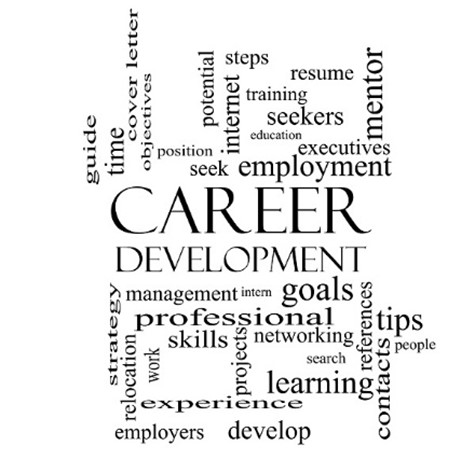
The Purpose To Performance (P2P) model can be used as a checklist for projects on many career areas and topics. It is especially useful as a framework for group discussion.
On a personal level, each participant can use the factors for self-development. In particular, participants can use the model to improve their conversational abilities and contributions. It will certainly help them particularly, in their approach to teamwork. The words will help participants think more clearly on how they can convert problems into solutions and ideas into action.
Thinking is a skill that can be developed with systems. This model can be applied to a wide variety of situations.
Each of the five hundred and more amazing people studied identified one or more important purpose in their life. They made those purposes into important applications through their principles and plans.
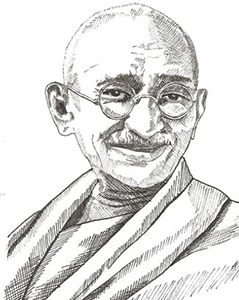
Each one of our amazing people developed principles to guide their activity. These principles were often derived from hard won experience, rather than textbooks.
These examples show each person needs to establish their own principles and can learn how to do so from amazing people.
The achievement of one’s purpose and vision depends on an effective plan. That involves writing a script, so that others understand the overall steps and stages. This enables them to contribute and know their roles. People who built major organizations, such as Henry Ford, Coco Chanel, Madam CJ Walker, Bill Gates, and Steve Jobs were able to convert their ideas into plans that created employment for many.
The ability to plan is a process that can be learned through training and experience. It involves the ability to link various subjects and topics that are integrated into project management applications. Therefore, it is important to involve participants in project planning from a young age.
That is our start point. Participants can understand the importance of purposes, principles and plans, through the choices made by amazing people. This is particularly so in the way they used their time and energy. We encourage a learning from action approach, combined with a learning from exemplars.

It is useful to meet in groups to discuss key aspects of character that the participants associate with the amazing people.
A – What Purpose?
This refers to the key reasons that each person invests time, money and the effort to achieve. For discussion, it is suggested that participants read either a short summary of the person’s life, or the full biographical virtual interview that accompanies the series.
Based on their reading and any other research, participants should each identify what they regard as at least one important purpose in the life of the amazing person they are studying. Was it to:
In small group discussions, ask participants which of the purposes mentioned are the ones with which they most identify. This makes the discussion more personal and helps the participants assess their own interests.
B – What Principles?
This refers to the guidelines each person chooses, whether they be humanitarian, spiritual or political, to reach their decisions and judgments.
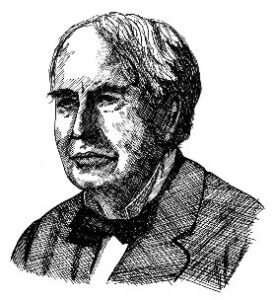
Each of the amazing people that we have studied developed principles that were important in their work and life in general. It is useful to ask participants to name the principles in each person’s life that they think were important. For example, was honesty a key principle? To what extent did the amazing people respect others? What can participants understand about self-management from amazing people?
Thomas Edison, the inventor who had 2332 patents to his name worldwide, had many principles that guided his efforts each day. He said: “Your worth consists in what you are and not in what you have.”
C – What Plans?
This refers to the choices people make with regard to their relationships, their career and wellbeing, in order to achieve their purpose.
Each person’s road of life will have various highways and by-ways. It is useful to invite participants to consider the decisions made by amazing people on the life journey.
In particular, participants should look at the timeline of the people they study and identify the age at which amazing people made major achievements. That will give each participant a time perspective and opportunity to assess action needed to achieve purposes that are important.
Participants should share with one or two others, the timeline of a person they have chosen. Can they identify any patterns that could be useful for their own life?
Activities – The key words in the model provide a checklist for action. If used regularly, the model will provide a guideline for thinking and action.
Invite participants to write a list of skills in which they have confidence and skills where they wish to improve. Ask them to share these in small group and discuss how they can help each other improve.
We are all judged by what we do, not by what we say. Character is what character does. Therefore, focus on helping participants to perform to their best.

People who made their mark in science, medicine, music, engineering, business and the arts, identified areas in which they wanted to excel and focused their efforts. They had a proactive approach. Rather than wait, they went in search of opportunities. They were motivated mainly by the task, not honours or glory. Only later, have we attributed accolades to them. Here are some examples that provide interesting points for discussion.

It is useful to invite participants to write a short biography on the achievements of an amazing person, and to share that with two others. Then, ask them to explain the key factors they noted in the persons work and life that enabled them to succeed.
Ask colleagues to list key words that associate with the success of the person they chose, and see if they are similar/different to those chosen by other participants.
What are the words they will personally work on, in order to improve their own performance?

Amazing people produced. They followed through on their ideas, their issues, their beliefs, their art, their innovations and their plans. The results in terms of books they wrote, music they composed, bridges and buildings they designed, research they conducted, races they won and distances they travelled, illustrate performance.
However, most amazing people have said they did not produce alone. They recognize their production was a function of a team performance. An individual may have had the idea and led the way, but the production involved teamwork. Bill Gates acknowledged how many people supported the development of Microsoft to become a major world company. The same is true of Steve Jobs at Apple and Jeff Bezos at Amazon. They were all effective coordinators.
Amazing people found ways and means of presenting their message. This is an integral part of performance. It is important that people understand the ways and means of using what is produced.
Walt Disney converted his production of characters like Mickey and Minnie Mouse into various presentations, inclusive of films, comics, shows, literature and the famous Disneyland.
Therefore, advertising and public relations need to be closely aligned with production. Famous artists such as Picasso, Kahlo, Michelangelo, are now more famous than when they were alive, because of the promotions that have made their works available and accessible in libraries, museums, art galleries, and via various forms of media.
What are the main areas in the model that you need to focus on to improve your performance?
As a guide, they can use the six key words that Rudyard Kipling referred to as his ‘six honest serving men.’

All of the amazing people in our series had problems in their own lives. It is useful to see how people managed to deal with the issues.

Many are surprised to discover that Elvis Presley had a hard time at school because he stuttered. How did he overcome that disability to become the most famous singer of his generation? Amongst the learning points emerging is that it is important to identify one’s strengths and develop them to the best of your ability.
People are usually surprised to find out that Thomas Edison, the amazing innovator, was sent home from school as a poor student. The problem was that he was profoundly deaf, but his teachers did not know. Despite his deafness, and other problems on his life journey, Edison became a genius inventor. He worked hard as an entrepreneur, and founded the giant General Electric Company.
A lesson to be gained from amazing people is that they were proactive in solving the issues. Rather than complaining, they assessed their options and made choices.

Although there will always be problems, it is clear that amazing people regarded them as challenges to be overcome. Therefore, they used their skills to look at the issues in new ways. In particular, they demonstrated curiosity in order to tackle the problems.
For example, James Watt noticed that when water boiled it gave off steam that disappeared into the air. His curiosity led him to the conclusion that steam was energy which could be used to power machines. As a result, he further enhanced the steam engine, originally developed by Newcomen, and this gave impetus to the Industrial Revolution.
Another example is Ignaz Semmelweis. In 1847, he noticed that women who gave birth at home were more likely to survive than those who gave birth in hospital. That was something he focused upon, and he challenged the doctors to wash their hands before going into the maternity ward. As a result, death rates in his area dropped dramatically. Today, he is referred to as the ‘saviour of mothers’.
Therefore, we need to look at perceptions, which is one of the most important factors in converting purpose to performance.
Perception can either make or break your efforts in any of your activities and projects. As Henry Ford, the founder of the Ford Motor Company, reputedly said: ‘If you think you can, or you think you can’t, you are right.’ In effect, we talk our way into or out of effective action based on our perceptions.

Perception is what some people call insight and vision. It involves understanding ideas and data and how they can be applied. Perception links ideas to applications. For example, it was considered impossible to build a machine that could fly. The Montgolfier brothers, from France, challenged that when they developed a hot air balloon that carried animals in flight. In 1783, they enabled people to glide above the ground. Perceptions of what was possible changed.
So began many experiments. Eventually, in 1849, Sir George Cayley designed and arranged the first manned heavier than air flight. That took place at Brompton Dale, Yorkshire.
Here are some other examples from different professional fields, to show participants how perception changes over many generations.
1632 – Antony van Leeuwenhoek was born in the Netherlands. He lived for 90 years and built about 500 microscopes. By about 1675, while looking through the magnifying lens, he observed small creatures. Although he could see them, he could not perceive their significance. He was looking at bacteria.
1822 – Louis Pasteur was born in France. He trained as a scientist and researched why milk and wine became contaminated and proposed bacterial germs were the cause. He therefore developed the germ theory of disease infection. Until that time the main view was that disease was spread by bad odours. The research of Pasteur led to improved sanitation to reduce bacterial infection, but he did not discover an antidote
1881 – Alexander Fleming was born. He qualified as a microbiologist and as a medical doctor. In 1928, he returned to his research laboratory after a holiday. He found that bacteria on some of his equipment had been destroyed. Further investigation led him to perceive that what he called penicillin was the reason. The antibiotic could be a drug to attack many diseases. Despite many efforts, he was not able to develop a version for use in hospitals and surgeries.

1938 – Howard Florey and Ernst Chain reviewed the work of Fleming and found a way to produce penicillin in a form for mass distribution.

Penicillin is now used in every country. However, it took people with different skills and perceptions nearly 300 years to convert observations into applications that have saved millions of lives. Participants can learn what perception means by tracing the way amazing people took an idea and developed it.
Set out the timelines associated with the people who had the perceptions for how:-
Leonardo da Vinci noted that: ‘All our knowledge is the offspring of our perceptions.’ He developed drawings of aviation machines and military equipment that eventually became reality.
In December 1831, Charles Darwin joined an expedition on HMS Beagle that sailed around the world for five years to study the environment. Twenty-eight years later, in 1859, he published his book, titled, ‘On the Origin of Species.’ His perceptions rocked traditional religious views, as he proposed humans evolved by a process of natural selection. So began the study of Evolutionary Biology
Edison was a successful inventor despite many setbacks. He was renowned for converting negatives into positives. When asked why his experiments to make light bulbs were not getting results, he declared they were a success. He said they taught him what did not work, and, as a result, he was closer to solving the problem.
Perception is linked to the mathematics of possibilities and probabilities. When we have an idea, we subjectively assess the possibility and probability of making it work. If we think it is worth pursuing, we may assess it objectively by gaining data and weighing the pros and cons, and by applying percentage estimates of the benefits.
How do people perceive and assess the level of risk in decisions? In 1854, Dr John Snow noticed that many people in London died from the dreaded disease of cholera. He had no medicines to cure them. Instead, he walked the streets of the city to see where cholera was most severe. By doing so, he perceived the possibility that the cause was coming from infected drinking water.
He told people to close off the water pumps in their street and boil all water. Many residents said that was ridiculous, as it meant they had no water supply. Those people who followed his perceptive suggestion lived, while those who did not, became victims of cholera.
Dr Snow went beyond his subjective perception to an objective analysis. He gathered data and scientifically charted the spread of cholera, by tracking and tracing. It showed sewage in the water supply was a key factor causing the disease. That was the start of epidemiology. Today, this is the way in which scientists and doctors understand the spread of infection and develop ways to control it.
Dr Elizabeth Blackwell was the first female medical doctor to qualify in the USA and also in the UK. However, she had few patients, as most people felt that a woman would not know as much as a man.

The same prejudice has faced women in other professions, such as those who wanted to become aviators, such as Amy Johnson and Jacqueline Auriol. Many people thought they would not perform as well as male pilots.
Helping participants understand perception is exceptionally important as it underlies fairness. It is vital that participants understand that persuading others to see things in a different way will take time and effort. Indeed, many amazing people, like the painter Van Gogh, were not widely recognized during their own lifetime. Only with the passage of time have perceptions changed.
Amazing people developed project skills through regular practice. We can learn from exemplars how they started and completed projects. In days when there were no computers, how were buildings, roads, canals, railways, ships and bridges designed and developed? We ask participants to identify project skills by looking at examples from the past and present.
Thomas Telford had little education and was apprenticed to a stonemason in 1771, at the age of 14. He was a fast learner and travelled all over the country building bridges, canals and roads. By 1818, he was elected the first president of the Institution of Civil Engineers, as a result of his project design and management achievements.
Ask participants to select projects in which they have an interest, such as music, drama, science, art, and sport, and apply project management principles in order to improve their performance.
Integral to understanding projects is the skill of planning. A person who is effective at planning anticipates what will be required and sets out a logical sequence of activities to achieve the project objectives. For example, an architect is given a brief to design a sports stadium. It is a major project that requires the ability not only to draw the design, but also indicate the building requirements.

An exemplar is Henry Ford. His plan was to develop the mass manufacture of cars by, via assembly lines, where each person had a clear work objective in terms of what action was required and the time allocated.
After the completion of a project, it is important for participants to conduct an action learning exercise. ‘What have I learned from working on the project?’ These notes should be presented to a project group and shared, as a basis for discussion and improvement.
A – What can the project group do more effectively next time?
B – What did I learn about my project skills and areas I can focus upon in order to improve?
Choose someone whose work you value and discover ways and means they managed their projects. This can be done by reading their quotations, or by listing key activities they observe from their work. An example is Charles Darwin who kept regular notes over 5 years, on his observations while studying wildlife around the world.

Project skills are essential in all aspects of life. Therefore, develop project plans and develop project skills. To do so, it is useful to have a general framework. The steps below are those we have suggested as starting points.
1 – Define – outline the project purpose and objectives.
2 – Discover – gather information relevant to achieving the goals.
3 – Discuss – share the ideas and information with colleagues to gain and compare views.
4 – Do – implement the plan in a systematic way that also takes into account flexibility to meet new circumstances.
5 – Debrief – conduct a debrief and an action learning review of the results gained in order to improve.
Making wise choices is a key to success. We are all confronted by a vast array of data linked to problems and projects. We have to decide which ones have priority to develop proposals for action. Establishing priorities involves judgement to distinguish the important from the urgent. Participants can learn the importance of such concepts from understanding the decisions made by amazing people, particularly in times of crises. Some chose their priorities on the basis of humanitarian principles, and some chose them more on commercial principles.
Abraham Lincoln had difficult choices when he became the President of the USA in 1861. Should he sanction a civil war to preserve the union of the states? Should he lead the fight to abolish slavery? He made both of those issues priority judgements and changed the course of history. We all have times in our own lives when important decisions and priority judgements have to be made.
The widespread use of computers for use in business began during the 1970s. Steve Jobs and his colleague, Steve Wozniak, founded the Apple company. After initial success, Jobs decided that the creation of easy-to-use mobile devices for personal use anywhere, was a priority. So began the iPad and the iPhone. The subsequent revolution in mobile tablet and phone applications had begun.
When faced with various proposals to solve problems, we need ways and means of deciding on the priorities. Amazing people in our series provide examples for comprehending the skills involved. The following illustrate examples that can be used in science, health or environment lessons.
During the industrial revolution, many employees died at work. The priority was on production, not safety. Today, we have health and safety laws. Therefore, all employers must put safety training as a top priority. As a result, in hazardous occupations protective clothing is supplied.

Likewise, there are strong laws to ensure products are made safe in order to protect consumers. As an example, cars are fitted with air bags and other safety devices. All airlines declare safety is their first priority.
The mining industry has a long history of dangerous working conditions. To give miners some warning of possible explosions, safety lamps were invented. Sir Humphrey Davy, in 1815, introduced a system. George Stephenson, the celebrated engineer, developed his version. The Irish inventor William Clanney added his approach. The principle of safety guides our priorities today.
The name Boeing is primarily associated with the production of airplanes. However, that was not the original family business. William Boeing originally inherited a forestry and lumber business from his father. He changed the priority to investing in the aviation business. This illustrates how priorities can change with one’s preferences. Boeing was fascinated by aviation. He developed and built up the company that is still a world leader.
Preferences are a key factor in self-development and life. It is the way people see issues. For some, problems are barriers; for others, they are opportunities. On some challenges, you will be optimistic and on others you will be pessimistic. In your mind, you will be telling yourself to what extent you feel you can or cannot achieve. We refer to this as self-talk – you can either talk yourself into or talk yourself out of opportunities.
People are encouraged by Coco Chanel’s life story. She was raised in an orphanage by nuns after her mother’s death, but became a fashion icon and entrepreneur. She used her preferences to guide her career.

Therefore, priorities need to reflect insights and intuitions and be supported by facts and figures.
Procrastination is one word beginning with P that amazing people avoided. Procrastination is usually associated with making excuses for not taking action. Rather than putting things off, amazing people focussed on getting things done.
Benjamin Franklin, writer, scientist, and a founder of the USA, said: ’You may delay, but time will not, and lost time is never found again.’
Therefore, we help participants use their time well. This can start by making a to do list and ticking off the items when completed.
 Why do certain people succeed and others miss their opportunities? We have gained insights from the life stories of more than 500 amazing people that we have studied. It is clear that most amazing established pathways and patterns they found helpful to guide their work. Some people call these habits or systems.
Why do certain people succeed and others miss their opportunities? We have gained insights from the life stories of more than 500 amazing people that we have studied. It is clear that most amazing established pathways and patterns they found helpful to guide their work. Some people call these habits or systems.
Charles Dickens, the famous author, wrote; ‘I never could have done what I have done without the habits of punctuality, order, and diligence, without the determination to concentrate myself on one subject at a time.’
In terms of work habits, it seems there is no one standard pattern that covers the way all amazing people worked. Some got up early and went to bed early. Others did the opposite. Each person worked out a formula that suited their approach.
Therefore, it is important that participants learn how to develop an effective pattern. There are, however, three important elements that we have noted from the study of amazing people central to their pattern of success. Again, for easy reference, we can view these with the letter P.
Let us look at the learning applications for each one of these.
The determination to keep going despite difficulties is a short way of describing persistence. Here are some defining views from leaders in politics, medical science and psychology.
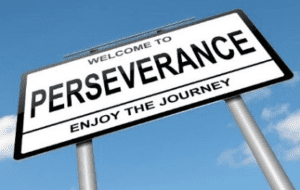
Calvin Coolidge, the 30th President of the USA from 1923 to 1929 wrote – ‘Nothing in this world can take the place of persistence. Talent will not: nothing is more common than unsuccessful men with talent. Genius will not; unrewarded genius is almost a proverb. Education will not: the world is full of educated derelicts. Persistence and determination alone are omnipotent.’
Dr Louis Pasteur said ‘Let me tell you the secret that has led to my goal. My strength lies solely in my tenacity.’
Dr H J Eysenck, a leading psychologist, wrote a book titled “Genius”. He concluded that in addition to intelligence and creativity, it was the character of perseverance that stands out as a key factor in the success of those who we regard as having the quality of genius.
The determination to persist with an idea, cause, or project is the factor that stands out. Edison, who had more experience than most, said that many people give up just when their goal was around the corner. He invented a term call ‘sticktoitiveness,’ which he passed on to his colleagues.
There is of course a distinction between persisting with a good idea and sound methods and the opposite, where you continue on blindly repeating the errors of the past. Therefore, it is important to test ideas and make judgements.
Participants are more likely to have patience where their preferences for the subjects and projects are high. That is, patience and determination are linked to personal interests.
Alongside being proactive and persistent is the need to be patient and not give up on one’s purpose and ideas. However, patience should not be interpreted as taking it easy, or being relaxed. The issues amazing people focussed on were complex. They recognized that there were unlikely to be easy solutions and patience was required to deal with the ambiguity and uncertainties.
Dr Jonas Salk, for example, witnessed the terrible effects of poliomyelitis (polio), a disease that paralyzed and immobilized victims. As a virologist, he felt that a vaccine could be created to protect people. He formed a team in 1947 that worked for seven years. During that time, they were impatient for a breakthrough, but patient in their systematic research process. In 1955, the mass inoculation of people around the world began.
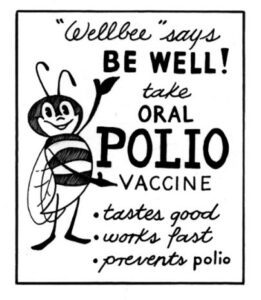
Leo Tolstoy, the celebrated Russian author wrote: ‘The two most powerful warriors are patience and time.’ Having written over 1200 pages in his novel ‘War and Peace’ he knew what he was talking about.
There is a saying that ‘patience is a virtue’. We can learn from the examples of Gandhi in India and Mandela in South Africa. They were impatient in their desire to introduce democratic change. To do so, they were patient in their process and facilitated peaceful consultation to gain support.
We know that practice is an important pattern. Theory can be learned. Skill has to be acquired through practice. Gary Player, a famous golfer who won many international competitions was accused by a spectator of being lucky when he chipped a golf ball into the hole during a major tournament. ‘The more I practice the luckier I get,’ he replied.
Pablo Casels, a world-famous cellist, was asked when he was in his eighties, why he continued to practice many hours a day. He replied that he was still learning. Many people are taught to play the piano or the guitar but, years later, have little ability. Those I have interviewed say it was because they did not keep up their practice.
Therefore, how can a pattern of positive practice be developed?
Lessons from psychology research indicate that the following are important practices:

Amazing people recognized ideas where not sufficient and that organizational processes that could move their purpose forward had to be put in place to sustain and maintain their initiatives.
The process of coordinating with others is a key to success. One way to do this is to send an agenda to those you are meeting beforehand, so that they can prepare. Also, at the end of the meeting, ask each person to summarize what action they will take.
From an early age, we learn to speak by repeating words that we hear from parents and friends. When we make errors, they are corrected. So, practice via repetition is a natural way of learning. It becomes more formalized when we enter school and have to follow the standard systems.
Amazing people through the ages realized that they needed the support of others to achieve their purposes.
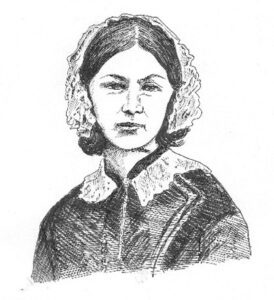 Florence Nightingale is celebrated as an outstanding nurse, but her initial achievements on the fields of battle were only possible because she recruited 38 nurses to go with her to the battle fields.
Florence Nightingale is celebrated as an outstanding nurse, but her initial achievements on the fields of battle were only possible because she recruited 38 nurses to go with her to the battle fields.These are a just a few examples from whom we can learn the importance of how to manage people. Each of the outstanding leaders focused on setting the process and culture that they wanted to see at operational levels.
If you have ideas, it is important to involve others to coordinate the applications. Therefore, look at how amazing achievers set objectives and organized, both themselves and others.
It is important people learn teamwork skills through involvement and experience. Therefore, when they have group projects, they should be shown how to conduct a meeting. Some useful guide points are –
After each group project, ask each person to write down –
We can help each other learn through the skills of discussion. In meetings, provide the opportunity to develop presentation and rhetorical skills. It is valuable to video participant project discussions and ask them to review their contributions against a set of questions. These can include –
These skills are sometimes presented under the term Oracy. Wilkinson, an initiator of Oracy in schools, declared – ‘The main job of the teacher is to provide situations which call forth increasing powers of utterance.’ In effect, this means assisting participants convert their thoughts into words.
The successful development of such skills will enhance participant abilities to –
We can learn through conversations by sharing views on the quotes of amazing people. The following are examples –
Andrew Carnegie – Industrialist and Philanthropist – ‘It is a sin for a man to die rich.’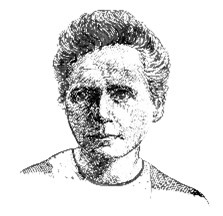
Marie Curie – Scientist – Life is not easy for any of us. But, what of that? We must have perseverance and above all confidence in ourselves. We must believe that we are gifted for something and that this thing must be attained.’
Helen Keller – Humanitarian – ‘Optimism is the faith that leads to achievement.’ – ‘Alone we can do so little. Together, we can do so much.’
President Lincoln – Politician – ‘You can tell the greatness of a man by what makes him angry.’
William Shakespeare – Author – “Some are born great, some achieve greatness, and some have greatness thrust upon them.”
 Harriet Tubman – Civil Rights Activist – ‘Every great dream begins with a dreamer. Always remember, you have within you the strength, the patience, and the passion to reach for the stars to change the world.’
Harriet Tubman – Civil Rights Activist – ‘Every great dream begins with a dreamer. Always remember, you have within you the strength, the patience, and the passion to reach for the stars to change the world.’
Organized group discussions on topics like these will improve oracy and meeting skills.
The ability to converse is the heart of quality learning through the exchange of ideas and information. It is a skill that can be learned.
To achieve high levels of performance over a period of time, you need to be passionate about what you do. Passion for their work is what amazing people had. Their work was far more than a job. It was a vocation, and it reflected their character and who they were.

Reading the life stories of amazing people, the dedication of their efforts in many different and difficult circumstances is impressive.
Michelangelo lay on his back for weeks painting the Sistine Chapel.
David Livingstone went to Africa as a Christian missionary and continued despite poverty and sickness.
Nelson Mandela served 27 years as a political prisoner, yet went on with passion and pride to become President of South Africa.
Shizue Kato stood up for women’s rights in Japan, despite hostility.
George Washington led the American colonial settlers to defeat the British Army and went on to become the first USA President.
Alexandre Yersin lived in poor conditions in Vietnam while searching for and discovering the bacillus that caused the bubonic plague.
Frida Kahlo, the acclaimed artist and designer, was born in Mexico and in her childhood survived polio and later was also badly injured in a car accident, yet still developed her remarkable skills.
Michael Faraday, with no formal education in science, followed his interests to innovate and create electricity.
Nancy Wake parachuted into France during the 2nd World War and worked with the French resistance forces against the Nazi invaders.

Passion reflects one’s beliefs not only in a cause, but also in yourself. The confidence to influence others and persuade, rises with passion. It is a form of power, as it raises your level of energy.
It is noticeable that many people with passionate beliefs enter politics. In that way, they can gain the institutional power to make laws and govern.
Aneurin Bevan is an example. He was passionate about improving the living conditions of working-class people and the health and safety of all. In 1948, he was the Minister who introduced the National Health Service in the UK. The policy being on treatment that was based on need rather than ability to pay.
Mahatma Gandhi was passionate about independence for India and led peaceful protests against colonial rule.
Mrs Pankhurst was passionate about changing the laws in the UK to gain the right for women to vote. As a result, she was arrested for demonstrating and put in prison.
Steve Jobs said – ‘Find your true passion and do what you love to do. Sometimes life hits you in the head with a brick. Don’t lose faith. I’m convinced that the only thing that kept me going was that I loved what I did.’
By studying the work achievements of amazing people, we can begin to identify career areas of interest. Reading about the work of Florence Nightingale in nursing, or Frank Whittle in aviation engineering, can inspire their career choices. Discussions on people who participants admire, usually provides strong indicators of career interests.
The essence of any self-development resource is that it helps participants develop life skills. The approach we have applied does this. It provides a model and exemplars that help participants improve by linking purpose priorities to personal performance.
On the criteria proposed by Innovative Global Education, we have developed practical guidelines on the key criteria: –
A review of over 500 people who made outstanding achievements in science, literature, medicine, business, engineering, music and other areas shows that having a clear purpose was central to their lives. Therefore, character and wellbeing education needs to help participants to identify their own sense of purpose for their careers and in life.
Our research through our Career Education Series shows that this can be done by providing participants with access to the life stories of achievers. This encourages participants to discover what inspired them and the action they took to achieve their goals.
In doing so, participants perceive how leaders in medicine, engineering, science, music, art and many other areas recognized and worked to achieve their purpose in life.
The Purpose to Performance model enables coaches and participants to have a common language, to share and compare ideas on character development. The six major factors provide a basis for conversation, and key words that participants can use each day, both in their study, work and self-development.

We can encourage people to develop their self-belief and confidence in order to challenge conventional thinking and practice. This is a start point for supporting mutual learning through the sharing and testing of ideas.
Judgement requires understanding the language of purpose, principles and planning. That is a challenge that confronts everyone, particularly people who are gaining experience. Therefore, understanding the life stories and challenges faced by amazing people provides a useful guideline for people to make sound judgements.
This approach helps develop effective ways of discussing social, moral and cultural issues.
Having a key purpose in life is important. It enables us to chart our life journey and plan.
Character Education Framework – UK Government – 2019.
H J Eysenck – Genius – Cambridge University Press – 1995.
V Frankl – Man’s Search For Meaning – Hodder and Stoughton 1964.
D Goleman – Focus – Bloomsbury Publishing – 2013.
C J Margerison – Amazing Careers – 2010.
CJ Margerison – Amazing Women – 2010.
M Seligman – Authentic Happiness – Free Press – 2002.
Innovative Global Education – Criteria for Conceptual Units of Learning.
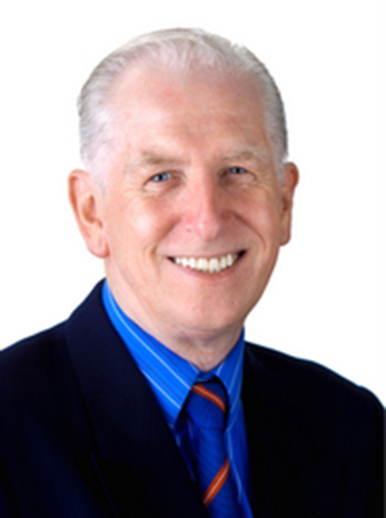
Dr Charles Margerison, President and founder of Amazing People Worldwide, is a psychologist. He is also President of Amazing People Schools. Dr Margerison has consulted widely for major organisations in the fields of organisational and educational psychology. He was previously Professor of Management at Cranfield University, UK, and the University of Queensland, Australia. He founded Amazing People Worldwide in 2006 and is supported by a dedicated global team. He previously co-founded Emerald Publications and Team Management Systems and has authored more than 30 books. Dr Charles is also the creator of Can Do Kids Worldwide, a virtual music group that helps students learn about countries and cultures through music. He has also developed Imagineland, for early learners. You can follow him on LinkedIn.
For more information, please email info@amazingpeopleworldwide.com
Websites:



Copyright © 2021. Amazing People Worldwide.
All Rights Reserved.
This site is protected by reCAPTCHA and the Google
Privacy Policy and Terms of Service apply.



